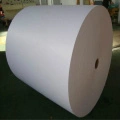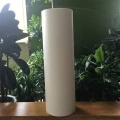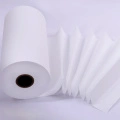Fiberglass air filter paper, a critical component in modern air purification systems, is engineered to deliver exceptional filtration efficiency while maintaining low air resistance. Manufactured using glass microfiber wool through a wet-forming process, this material is renowned for its uniform fiber distribution, high dust-holding capacity, and superior mechanical strength. As highlighted by Hebei Fangyu Filters Material Technology Co., Ltd., the product is categorized into three primary series: ASHRAE, HEPA, and ULPA, each tailored for specific filtration needs across diverse industries. This article delves into the technical specifications, applications, and benefits of fiberglass air filter paper, supported by insights from authoritative sources like the National Institute of Standards and Technology (NIST).

The unique properties of fiberglass air filter paper stem from its advanced manufacturing process. The wet-forming method ensures that fibers are evenly distributed, creating a dense yet permeable structure that maximizes dust retention without compromising airflow. This balance is crucial in applications ranging from residential HVAC systems to industrial cleanrooms. According to Hebei Fangyu Filters Material Technology Co., Ltd., the material's high strength-to-weight ratio allows it to withstand rigorous operational conditions, making it ideal for high-efficiency filtration in demanding environments.
One of the standout advantages of fiberglass filter paper is its low resistance, which reduces energy consumption in ventilation systems. This is particularly beneficial in large-scale facilities such as pharmaceutical plants and semiconductor manufacturing units, where maintaining consistent airflow is critical. Additionally, the product's high dust-hold capacity minimizes the frequency of filter replacements, lowering maintenance costs over time. These features are corroborated by NIST's research on filtration efficiency standards, which emphasize the importance of material design in achieving optimal performance (NIST, 2023).

The product's technical data table provides a detailed breakdown of its performance metrics across different classifications. Fiberglass air filter paper is categorized into three main series: ASHRAE, HEPA, and ULPA, each designed for specific filtration requirements. Below is a summary of the key parameters:
| Classification | Grade | Efficiency (%) | Basic Weight (g/m²) | Thickness (mm) | Air Resistance (Pa) | Tensile Strength (N/m) | Stiffness (mg) |
|---|---|---|---|---|---|---|---|
| ASHRAE | FY-F9 | 95 | 70 | 0.34 | 55±10 | 1200 | 1200 |
| HEPA | FY-H14 | 99.995 | 70 | 0.34 | 340±20 | 1200 | 1000 |
| ULPA | FY-U17 | 99.9999 | 73 | 0.37 | 500±20 | 1200 | 1000 |
The ASHRAE series (F5–F9) is suitable for general air conditioning systems, gas turbine intakes, and compressors, offering moderate filtration efficiency. The HEPA series (H10–H14) is designed for high-grade cleanrooms, nuclear exhaust systems, and advanced air purifiers, achieving up to 99.995% efficiency. The ULPA series (U15–U17) provides ultra-high efficiency, making it ideal for semiconductor manufacturing and 100-grade cleanrooms (Hebei Fangyu Filters Material Technology Co., Ltd.).

Fiberglass air filter paper's versatility makes it a preferred choice in numerous sectors. In residential and commercial HVAC systems, it ensures clean air circulation while maintaining energy efficiency. For industrial applications, the material is used in vacuum exhaust filters, paint spray booths, and photographic film manufacturing to remove particulates and contaminants. In the pharmaceutical industry, it plays a critical role in maintaining sterile environments during drug production, as noted by Hebei Fangyu Filters Material Technology Co., Ltd..
The microelectronics sector relies on fiberglass filter paper for chip fabrication and component assembly, where even the smallest particles can compromise product quality. Similarly, nuclear power plants utilize HEPA and ULPA filters to control radioactive dust, ensuring compliance with stringent safety standards. The product's adaptability is further highlighted by its use in high-end vacuum cleaners, air purifiers, and respiratory masks, demonstrating its relevance in both industrial and consumer markets.
Hebei Fangyu Filters Material Technology Co., Ltd., a leading manufacturer of filtration solutions, has established itself as a trusted name in the industry. With a focus on innovation and quality, the company specializes in producing glass microfiber air filter media that meet international standards. Their product range includes hepa filter paper for sale and fiberglass filter paper, catering to a global clientele (Hebei Fangyu Filters Material Technology Co., Ltd.).
The company's commitment to excellence is reflected in its adherence to rigorous testing protocols. According to Hebei Fangyu Filters Material Technology Co., Ltd., all products undergo certification under standards such as EN779/ISO16890, ensuring compliance with global filtration benchmarks. This dedication to quality aligns with NIST's role in developing measurement standards that underpin technological advancements (NIST, 2023).
Fiberglass air filter paper represents a significant advancement in filtration technology, combining durability, efficiency, and adaptability. Its applications span from everyday HVAC systems to cutting-edge cleanroom environments, underscoring its importance in modern industrial and residential settings. As industries continue to prioritize air quality and sustainability, the demand for high-performance filters like those produced by Hebei Fangyu Filters Material Technology Co., Ltd. is expected to grow. By leveraging innovations in material science and adhering to rigorous standards, the company is well-positioned to meet the evolving needs of the filtration market.
National Institute of Standards and Technology (NIST). (2023). Standards for Filtration Efficiency and Air Quality Measurement. Retrieved from https://www.nist.gov/.
Hebei Fangyu Filters Material Technology Co., Ltd.. (n.d.). Fiberglass Air Filter Paper Specifications. Retrieved from https://www.filtersmaterial.com/fiberglass-air-filter-paper.html.
Thickness:0.2-6 mm or Customized
Strand Thickness:0.5-8mm
Swd:2.5-100mm Lwd: 4.5-200mm
Surface Treatment:Powder Coated,Galvanized
MATERAL: PHENOLIC PAPER
MELT-BLOWN PBT
NON-WONEN LAMINATES
DIESEL FUEL FINE FILTERATION GRADE
APPLICATION : FUEL OIL WATER SEPERATION FILTER MEDIA
Material: Electrostatic cotton with activated carbon
PET/PP with Activated Carbon
Basic weight: 200-800g/m2
Application: Cabin Air Filters Panel Air Filters, Filter Cartridge, etc.
RAW MATERIAL: Polypropylene
PROCESS TECHNOLOGY: Melt-blown non-woven
RANGE OF EFFICIENCY: M5 ~ H11
Jul,2025,31
Jul,2025,31
Jul,2025,31
Jul,2025,31
Email to this supplier

